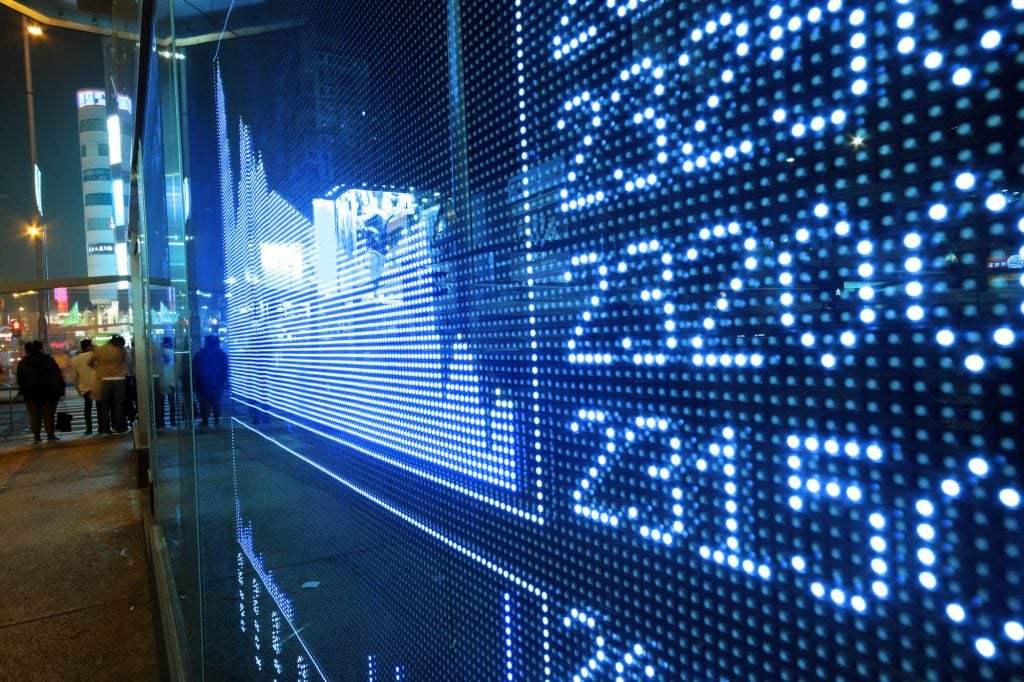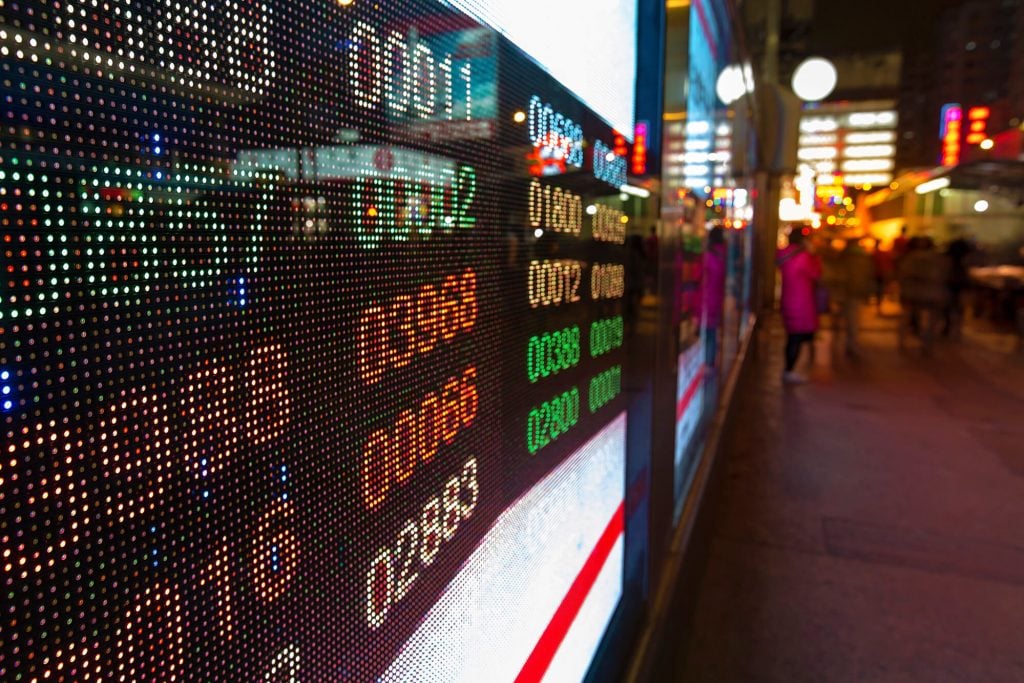Stock trading in some form has been around for over 500 years. Once reserved for rich investors and institutions, it’s opened up to public and retail investors of all means and types. But who got there first?
In this post, we’ll take a look at the ten oldest stock exchanges in the world, all of which are still functioning — in some capacity or name — in the present day.

10. Bombay
The Bombay Stock Exchange, currently known as BSE Limited, is the oldest stock exchange in Asia. Its roots go back to the 1850s when a small band of stockbrokers began meeting beneath the shade of a banyan tree in Mumbai, India. Over the next couple of decades, the group grew in numbers but continued to meet in a series of changing locations.
The BSE finally found a permanent home in 1875. Businessman Premchand Roychand, known as the Indian “Cotton King,” led the establishment of The Native Share & Stock Brokers Association, which took up residence on Dalal Street in Mumbai. Today it’s the 7th largest stock exchange in the world, listing over 5,400 commodities worth over $2.8 trillion (US).
9. Toronto
The seeds for the Toronto Stock Exchange (TSX) were most likely planted in 1852 when 12 Canadian businessmen began the Association of Brokers. That’s a very educated guess since no records of their transactions have survived. In 1861, the TSX was officially created by 24 stockbrokers who met at the Masonic Hall in Toronto. They launched with 18 stocks on the exchange, which they then traded in grueling 30-minute sessions every business day.
Today, Canada’s oldest stock exchange occupies the EY Tower in the Financial District of Toronto. They have over 2,200 listings with a market cap of $3.1 trillion, making them the 8th largest stock exchange in the world. The TSX was one of the first stock exchanges in the world to go fully electronic after Nasdaq, closing its physical trading floor in 1997.
8. Madrid
The Bolsa de Madrid is the largest stock exchange in Spain. Officially, it was launched in 1831 under King Fernando VII, after the passage of a law ordering its establishment. King Joseph Bonaparte I had tried to create a Spanish stock exchange in 1809 but couldn’t get it off the ground because Madrid hadn’t evolved into a major business center by then. The first securities on the Madrid Stock Exchange were railways, steel companies, and financial institutions.
Today, the Bolsa de Madrid is owned by Bolsas y Mercados Españoles (BME), who also owns Spain’s other three stock exchanges in Barcelona, Bilbao, and Valencia. It only lists a fraction of the companies other European stock exchanges handle, with only 157 listed companies as of February 2021.
7. Frankfurt
There’s some dispute about when the Frankfurt Stock Exchange officially launched. Its roots extend back to the medieval era — 1150 to be exact — when business leaders began trading at seasonal fairs. Frankfurt eventually emerged as a major European financial hub.
The Frankfurt exchange itself claims that it was founded in 1585 when fair merchants met to set consistent exchange rates to counter the lack of a central unit of currency in Europe. But it wasn’t a formal, public stock exchange until 1808, and didn’t start trading common stock until 1820.
Today, Börse Frankfurt occupies two trading floors and remains Germany’s largest stock exchange, as well as the 12th biggest in the world. Their market cap is the equivalent of $1.8 trillion in US cash.
6. Milan
Borsa Italiana is Italy’s only stock exchange, with 353 listings on its roster. It was founded by an official decree in 1808. Fifteen business leaders were charged with finding a permanent house for the exchange, which they managed to do fairly quickly. Borsa Italiana remained a public stock exchange until 1998 when it was converted to private ownership.
In 2007 Borsa Italiana merged with the London Stock Exchange (LSE) to form the London Stock Exchange Group. In October 2020 the LSE began the process of selling Borsa Italiana to Euronext, the biggest stock exchange in the European Union. The acquisition was completed in April 2021. Euronext is expected to have its Italian operations ready to go sometime in 2022.

5. London
The beginning of the London Stock Exchange can be traced back to the 16th century. The Royal Exchange was established by Queen Elizabeth I. Initially they sold commodities like coal, paper, and salt. In 1698, broker John Castings started posting commodity and stock prices at a local coffee house, where London traders were forced to meet because of their insufferably rude manners.
The informal nature of the exchange attracted a fair share of scammers, fraudsters, and dishonest traders. To that end, the brokers officially started the London Stock Exchange in 1801 by establishing a membership fee and setting up some basic trading rules.
Today, the London Stock Exchange is the world’s most diverse stock exchange in terms of international companies — they list more than 2,400 securities from over 60 countries. They’re the third-largest stock exchange in the world with over $3.13 trillion in market value. They also merged with Italy’s Borsa Italiana from 2007 until 2021 (see above).
4. New York
By far the largest stock exchange in the world, the New York Stock Exchange (NYSE) was born (though not by that name) on May 17, 1792. The US securities market was taking off, and brokers were looking to establish a more formalized marketplace besides the auction system they used for commodities like wheat and tobacco. They set up the NYSE with the Buttonwood Agreement, so named because it was reached in a meeting beneath a buttonwood tree. (What’s this thing early stockbrokers had about meeting under trees?)
The exchange got its current name in 1817. The growth of the NYSE parallels that of America as a world power and was accelerated by the rise of trading by telegraph. In 1865 the NYSE moved to its current home on Wall Street in Manhattan and began using telephones to conduct trades in 1878.
Since then, the NYSE has become the center of the world economy and the main barometer of monetary health. Its crash in 1929 that caused the Great Depression resulted in higher governmental regulation. From that point forward — with some notable exceptions — it’s been on a consistent growth trajectory. Today it lists 2,400 commodities with a $26.2 trillion market cap.
However, the NYSE isn’t the oldest stock exchange in the US. That distinction goes to…
3. Philadelphia
The Philadelphia Stock Exchange was initially established in 1790. Originally called the Board of Brokers, it was first based in Philadelphia’s City Tavern, probably the most important bar in the history of the United States. Thomas Jefferson, Benjamin Franklin, John Adams, and more all dined there when America was plotting its independence from Britain.
At the time Philadelphia was the financial and political center of the US. It was ultimately overtaken by New York as America’s economic hub. Throughout the 20th century, it merged with the exchanges in Baltimore and Washington. Finally, in 2007 the Philadelphia Stock Exchange was purchased by Nasdaq, the second-largest exchange in the world.
2. Paris
Paris Bourse, the second oldest stock exchange in the world, was officially approved by the Royal Council of State in 1724. This came after Scottish economist John Law had attempted to repair France’s downwardly spiraling economy by issuing shares of ownership in his economic pursuits. Law ultimately failed, but the idea stuck.
The Paris Bourse was the prototype for the contemporary “exchange floor,” where brokers shouted prices over each other in a practice known as “open outcry.” It was forced to close during the French Revolution but reopened in 1795. It remained open with little incident for more than 200 years afterward.
In 2000, the Paris Bourse merged with the stock exchanges in Brussels and Amsterdam to create Euronext, the first pan-European stock exchange with operations in 8 cities on the continent. Including one in…
1. Amsterdam
The oldest stock exchange in the world — and the virtual model for stock investment that still exists today — began in the Netherlands in 1602.
Amsterdam’s stock exchange started as a vehicle for investors in the Dutch East India Company, who sold shares in their business to pay for their expeditions in the spice trade (and, sadly, the slave trade). This was, effectively, the first initial public offering in world history. Stock trading was born.
The Amsterdam Stock Market grew in size and commodity variety. It was also the site of the first examples of over-speculation and market crash, both due to the growth and eventual burst of the tulip price bubble in 1634. Other than that hiccup, the Amsterdam Stock Market has remained in business ever since. It’s now part of the Euronext stock exchange, the 7th biggest in the world.

Gorilla Trades: Your Key to the Stock Market
Gorilla Trades may not have 500 years of experience, but we’ve revolutionized contemporary trading with our data-driven stock picks for over 20 years. To learn more about how we can boost your portfolio’s value, sign up for a free trial with daily stock alerts.




